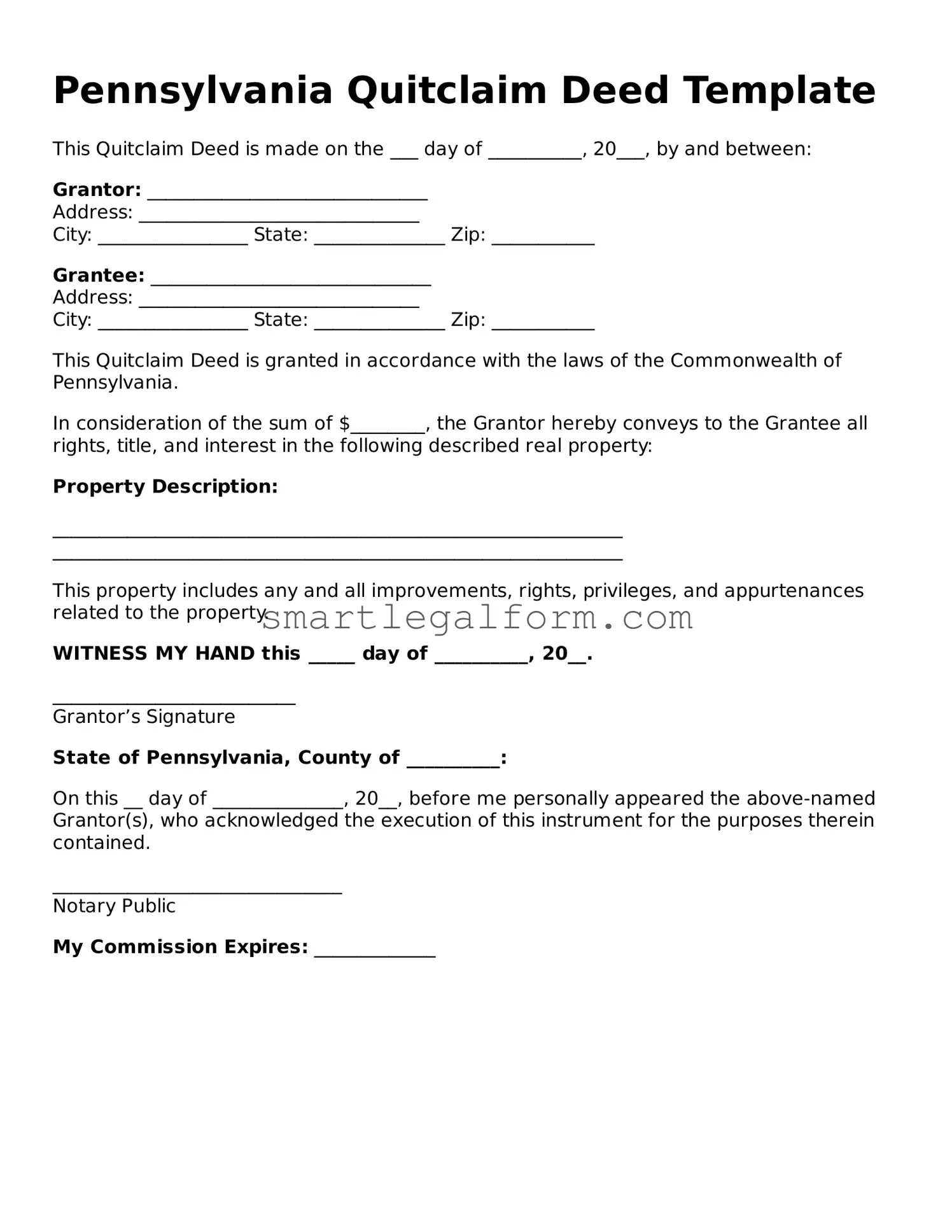Pennsylvania Quitclaim Deed Template
This Quitclaim Deed is made on the ___ day of __________, 20___, by and between:
Grantor: ______________________________
Address: ______________________________
City: ________________ State: ______________ Zip: ___________
Grantee: ______________________________
Address: ______________________________
City: ________________ State: ______________ Zip: ___________
This Quitclaim Deed is granted in accordance with the laws of the Commonwealth of Pennsylvania.
In consideration of the sum of $________, the Grantor hereby conveys to the Grantee all rights, title, and interest in the following described real property:
Property Description:
_____________________________________________________________
_____________________________________________________________
This property includes any and all improvements, rights, privileges, and appurtenances related to the property.
WITNESS MY HAND this _____ day of __________, 20__.
__________________________
Grantor’s Signature
State of Pennsylvania, County of __________:
On this __ day of ______________, 20__, before me personally appeared the above-named Grantor(s), who acknowledged the execution of this instrument for the purposes therein contained.
_______________________________
Notary Public
My Commission Expires: _____________
